 [In the first installment of this post I provided a transcription of the full text of a recently discovered May 8, 1944 set of in-house protocols for the annotation, intake, and processing of all photographs by LIFE‘s London-based team of photographers. In part 2 I discussed its authorship, and what it revealed about the SHAEF/MoI censorship system through which all civilian D-Day coverage passed.
[In the first installment of this post I provided a transcription of the full text of a recently discovered May 8, 1944 set of in-house protocols for the annotation, intake, and processing of all photographs by LIFE‘s London-based team of photographers. In part 2 I discussed its authorship, and what it revealed about the SHAEF/MoI censorship system through which all civilian D-Day coverage passed.
This document pertains to and illuminates several aspects of our investigation. For that reason, in analyzing its protocols for the assigned photographers and the London darkroom staff, I solicited responses thereto from the members of our team with professional experience as photographers: J. Ross Baughman, photojournalist, combat photographer, picture editor, and author; Rob McElroy, photographer and photo historian; and Tristan da Cunha, photographer and darkroom/post-production technician.
I’ve consolidated all of our observations and analyses, to make them as clear as possible. Part 3 appears below. Click here for Part 1, and here for Part 2. — A.D.C.]
•
LIFE Magazine’s Protocols for D-Day Photos (c)
… Per my previous post, since John Morris was the nominal supervisor of LIFE‘s London photo section, logically these protocols bore his imprimatur. However, the level of detail and precision here goes way beyond Morris’s level of know-how. Furthermore, imposing any system fell way above Morris’s pay grade as the New York office’s designated gofer — the photo department’s errand boy in London.
Most probably, this advisory simply reflects and codifies the processing protocols that LIFE‘s London darkroom chief H. C. “Braddy” Bradshaw, building on what his predecessor Hans Wild initiated, had already established with his darkroom crew — four draft-exempt local teenage lads he’d trained to his own exacting standards.
By this time LIFE‘s seven London-based staff photographers (and the freelancer Capa as well) had surely coordinated their procedures for submitting films and captions with Bradshaw, who in turn had systematized intake of their product and the processing thereof. Nothing in this set of protocols suggests that it represents any significant change from business as usual. In fact, this document may do nothing more than replicate existing written guidelines previously distributed to photographers and darkroom staffers. (Whether, from the outset, LIFE‘s London operation mirrored the procedures already established at headquarters in New York, or diverged from those in any notable way, remains unknown.)
So I’ll go further, to hazard a guess that a demand came from higher up the TIME-LIFE chain of command for all departments of the London office to formalize and document their organizational preparations for coverage of the invasion. I assume that, in response, Morris asked Bradshaw and Wild to compose these instructions, which Morris presumably reviewed and endorsed. They were then typed up, probably — given the number of copies required — by a TIME-LIFE secretary, and distributed to the darkroom staff, the seven staff photographers plus Capa, and others in the TIME-LIFE hierarchy at the London office. Conceivably they were even sent on to the New York headquarters for review and approval.
What Do These Protocols Tell Us?
After conferring with our team’s technical experts, J. Ross Baughman, Rob McElroy, and Tristan da Cunha, I offer the following commentaries.
First, these protocols have three components:
- The photographers’ method of identification of their individual rolls of 35mm and 120 film and the sequence thereof, presumably coordinated with their caption notes.
- The darkroom staff’s preservation of the photographers’ annotations and the films’ inherent image sequences.
- Processing procedures for the films, to ensure quality control.
•
The film types involved were almost exclusively 36-exposure 35mm rolls and 12-exposure 120 rolls. The unpredicted exception: Robert Capa’s lone, unexpected 10-pack of 4×5 film exposures showing a below-decks briefing session aboard the USS Samuel Chase while either docked on the English coast or en route to Normandy. These were almost certainly made with a Speed Graphic borrowed from another photographer on board the Chase, since Capa never carried such a camera, nor did any of LIFE‘s staff photographers assigned to the invasion.
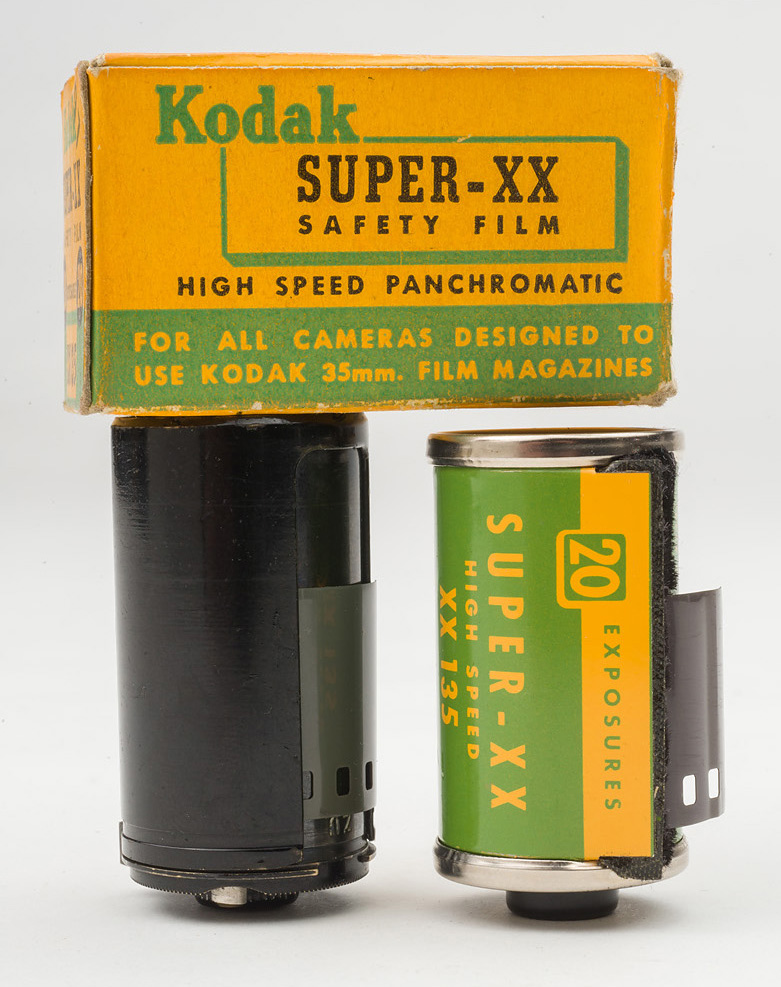
Zeiss Ikon cassette on left, Kodak Super-XX cassette on right. Note height difference. Photo © 2015 by Rob McElroy.
Because 35mm film comes in metal canisters, marking the canisters with an identifying letter (for the photographer’s name) and numeral (for its sequential order in the reportage) poses no problem. Either a pointed stylus or a grease pencil can serve to inscribe those characters durably on the canister. One could also use a lead pencil or fountain pen, although those marks might possibly get rubbed off accidentally.
And because 35mm film comes with a tongue or leader of film outside the canister, it’s possible to scratch the same information into the emulsion with a stylus (which would survive through processing) or write it thereon in ink or lead pencil (which would wash away during processing).
Without getting too granular in detailing film types, 120 film does not offer the same options. Any annotation on individual rolls thereof has to get done after the roll gets extracted from the camera and sealed shut with a light-proof endpaper, either on that paper or on the metal take-up spool. This poses obvious problems when the photographer works under difficult and stressful conditions — e.g., under fire in a combat zone. However, Capa, like most of his colleagues at LIFE, used 35mm cameras when covering the fighting, reserving the more cumbersome twin-lens reflex with its slower film for less hectic situations.
•
The difficulties of annotation increase when and if the situation requires additional rolls of film, especially when it involves rapid action, as in combat. Consider the case of Capa. Customarily he carried two Contax II 35mm cameras, each pre-loaded with 36-exposure Kodak Super-XX film. Presumably, if he followed these protocols dutifully, his favorite Contax on D-Day held roll 1-C, with roll 2-C in his backup Contax. So far, so good.
Though we know he exposed only one roll of 35mm film on the morning of D-Day, let’s assume he has exposed both pre-loaded rolls, and wants to continue. Now he has to reload his favorite Contax — with (according to the protocols) roll 3-C. If he has followed the prescribed system, he has marked that roll, along with several others, in anticipation of this very moment. He has them at hand, in a jacket pocket or an oilskin pouch. Crouched in the sand at the shingle (according to his own account), with bullets whizzing around him and shells exploding nearby, he reaches in and pulls out … whoops, that’s roll 5-C. Try again: roll 4-C. Etc.
I would guess that, under duress, a photographer would slap in whatever unused roll came to hand, numbering system be damned.
•
Logistical issues also arise with the captioning process. In a relatively calm, untroubled situation a photographer can write his captions on the spot, and in detail. We have one such caption sheet from Capa as part of his D-Day coverage:
Here Capa specifically numbers and annotates his exposures. He made these clusters of B-roll images while on board the Chase, strolling around the open decks in broad daylight, under no pressure, clearly intending to fulfill the requirements set forth in the protocols. But all his other caption notes are broad and generic, suggesting that he wrote them not on the spot but hours after the fact:
•
Notoriously lax in his captioning, Capa stayed true to form for this assignment. Regrettably, we don’t have caption notes from any of his LIFE colleagues to use for comparison. However, given that theirs got written under comparable circumstances, I’ll venture that often they matched Capa’s in vagueness and clichéd locution.
By the Numbers
Let’s take the instructions here in the order indicated above.
1. The photographers’ numbering of their rolls of film. Rob McElroy writes,
I can say initially that the instructions all make sense and would not be difficult to implement for the photographers. We used a similar procedure when I worked for the AP [Associated Press] in the 80s.
It seems unlikely to me, though not impossible, that working photographers normally carried around styluses for the purpose of annotating their films. Nor would they plausibly have included bottles of India ink and nib pens in their kits — nor, for that matter, fountain pens and bottles of ink for those. Lead pencils, on the other had, were cheap, plentiful, and easy to replace. Capa wrote his caption notes in pencil. This makes it reasonable to assume that he used the same instrument to annotate his films, and that this was common practice among his colleagues.
2. The darkroom staff’s (a) preservation of the photographers’ numbering of their rolls of film and (b) annotation of the sequence of 120-film negatives. For readers who have no darkroom experience: At the outset of processing, 35mm films get removed from their canisters and spools, and 120 films get separated from their backing paper and spools, in complete darkness. Any pencil or ink annotations on the films themselves will disappear during immersion in the various liquid solutions.
Consequently, the basic annotations mandated by these protocols and provided by the photographers (e.g., 1-C for Capa’s first roll) have to get transcribed to the rolls of film by the darkroom staff, in a physical form that will survive soaking in the various solutions. With 120 film, and with 35mm film whose rewinding has pulled the leader into its cassette, this has to get done in the dark. How do you go about that?
I posed this question to darkroom technician Tristan da Cunha, who successfully recreated the processing of Capa’s D-Day films in LIFE‘s London darkroom on the night of June 7, 1944. He writes,
Last night, I did the test of writing in the dark on the beginning of a 120 film. I used my steel tip to write. I am sending you two photos of the result.
The advantage of this method is that you can perfectly feel the tip engraving the surface, and it is indelible. Quite easy to do, even without any practice.
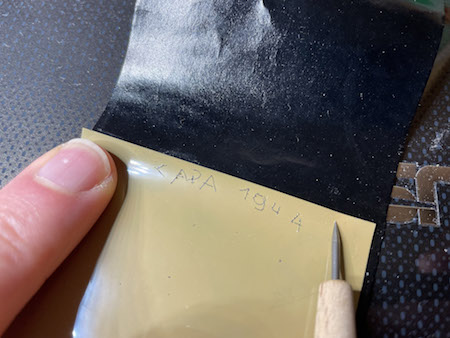
Writing with a stylus in the emulsion of 120 film. Photo copyright © 2024 by Tristan da Cunha.
I also tried writing with Indian ink. As I expected, the ink takes at least a minute to dry, and you can never be sure that the pen is working well (the ink dries very quickly in the pen). I then put the piece of film on which I had written into the water. The ink is very resistant to water (it does not dilute), but as the gelatin swells, it comes off as soon as you touch it. This is therefore absolutely not a valid method for writing on a film before developing it.
This is why I have difficulty understanding why the instructions suggest using this ink.
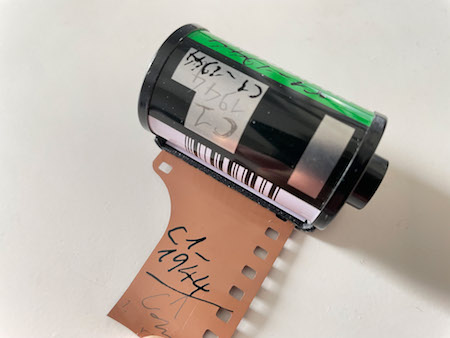
35mm film cassette and leader annotated with pencil and India ink. Photo copyright © 2024 by Tristan da Cunha.
I replied,
Big thanks for these images and your test. Clearly it’s possible to write/scratch readably into the leader of a roll of film. …
I am inclined to think that annotating the negs with India ink would have been done after the 120-film rolls were processed and dried, as they were being cut up into individual negatives for post-processing ease of handling and identification purposes.
As both Chuck Herrick and I saw when viewing the Capa D-Day contact sheets in the ICP archives, such annotations do appear on the 120-film negs in the collection. I’ve seen no such notes on any 35mm negs or strips. And of course the leaders got discarded after processing — so, if the suggested procedures (or your version thereof) got used, the evidence is long gone.
3. The processing of the films. The protocols’ instructions and advice on this subject appears elementary and conventional. We can reasonably conclude that all involved — the photographers, “Braddy” Bradshaw and his darkroom crew, and John Morris, under whose name this document got issued — found these guidelines familiar and unsurprising.
•
From the standpoint of our investigation, as previously discussed, the only revelation here consists of its casual passing reference to the role played in the system by the SHAEF/MoI censors. This provides further evidence that all the incoming D-Day film from LIFE‘s assigned photographers underwent stringent censorship before John Morris ever laid eye on it, and that he received only the MoI-approved portion thereof to distribute to the press pool and send on to New York for LIFE‘s D-Day issue — the Occam’s-razor explanation for the missing first portion of Capa’s lone 35mm roll of Omaha Beach exposures.
•
(For an index of links to all posts in this series, click here.)
•
This post supported in part by a donation from Carlyle T.
•

Special offer: If you want me to either continue pursuing a particular subject or give you a break and (for one post) write on a topic — my choice — other than the current main story, make a donation of $50 via the PayPal widget below, indicating your preference in a note accompanying your donation. I’ll credit you as that new post’s sponsor, and link to a website of your choosing.
And, as a bonus, I’ll send you a signed copy of my new book, poetic license / poetic justice — published under my full name, Allan Douglass Coleman, which I use for my creative writing.


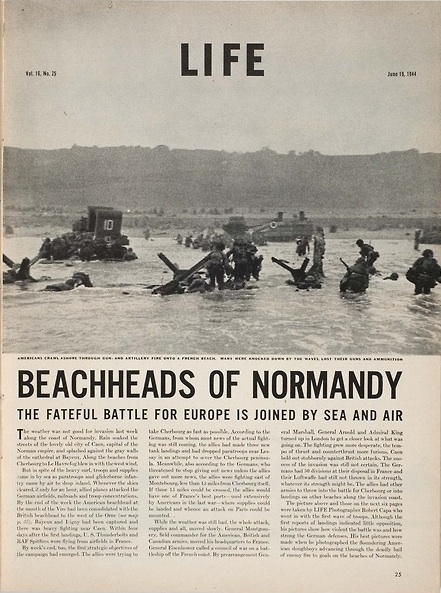
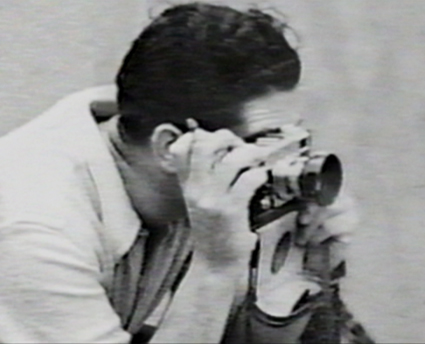
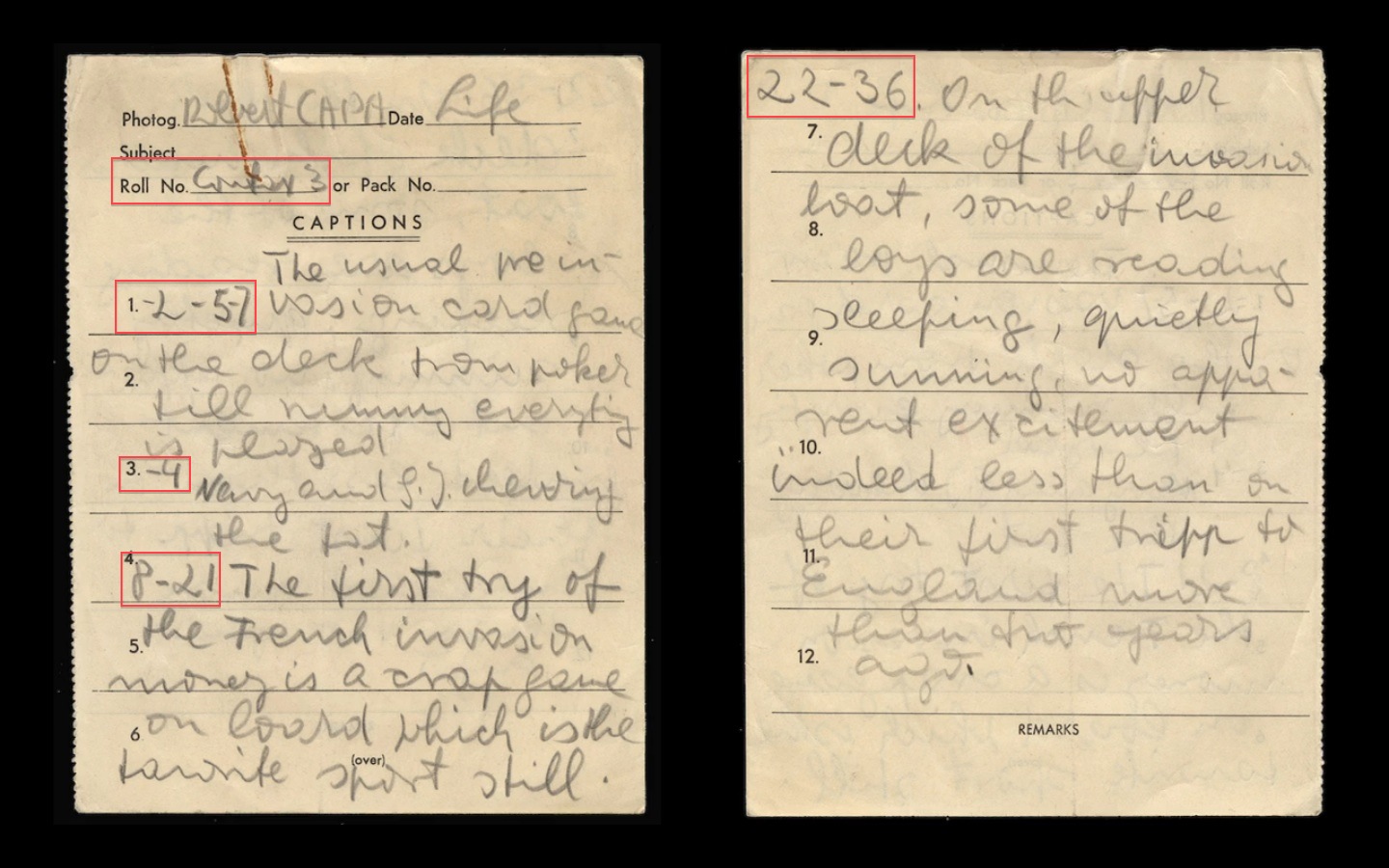
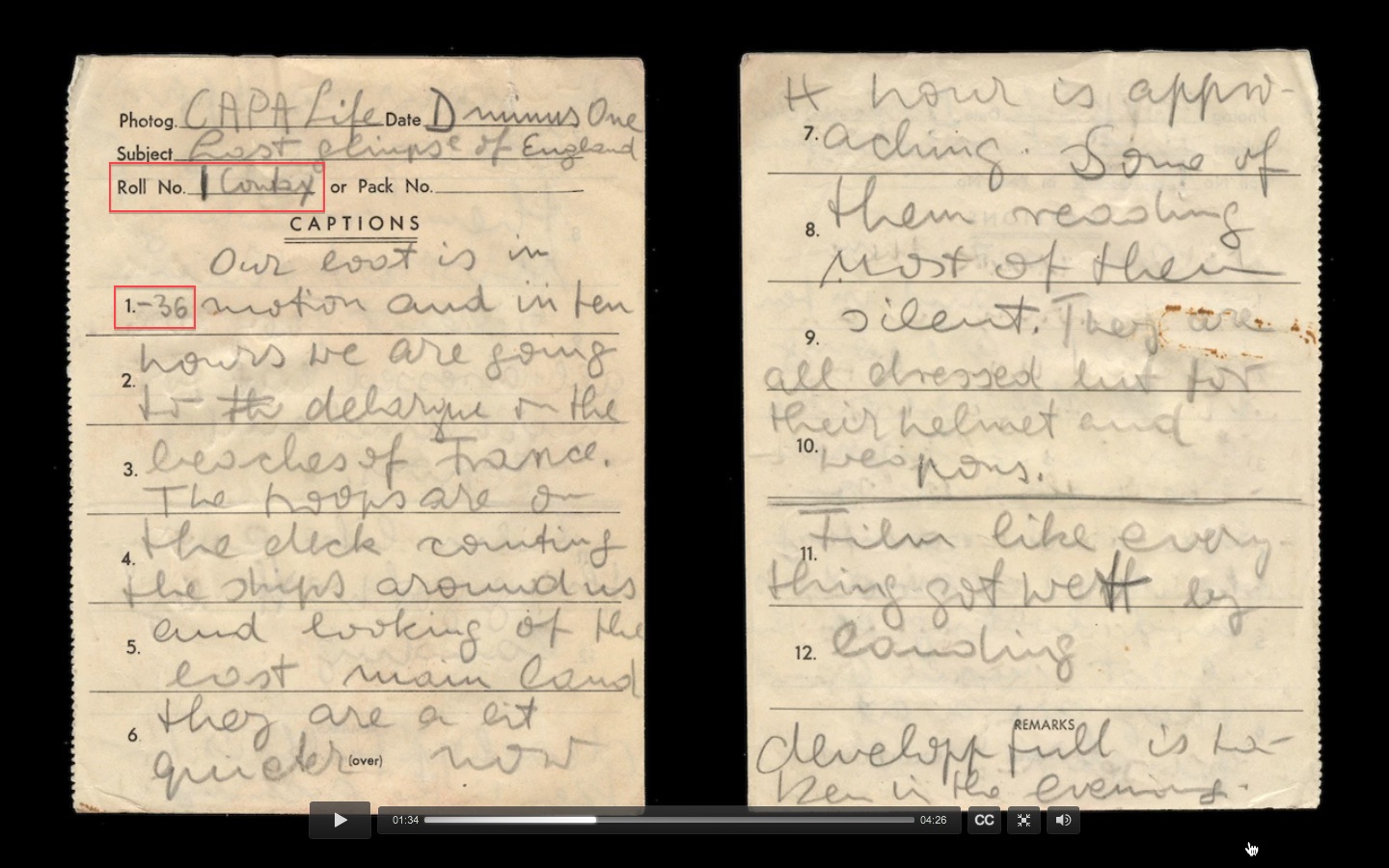




Leave a Comment